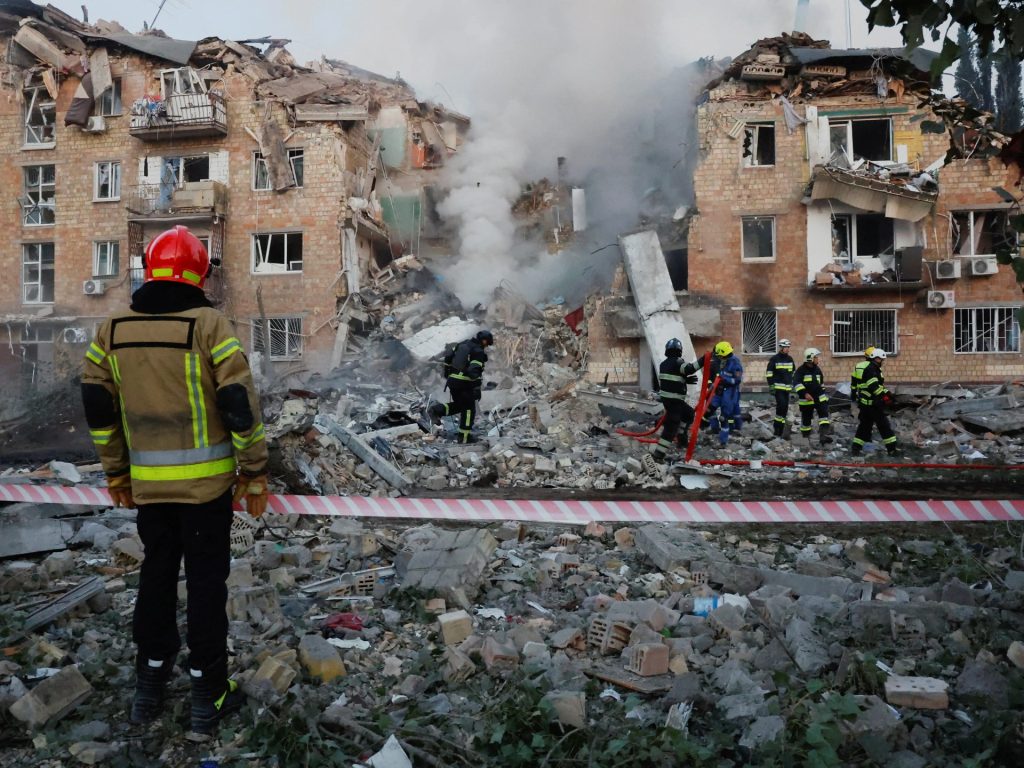Russian Attack on Zaporizhia: A Grave Reminder of Ongoing Conflict
At least one person died and 24 others, including two children, were injured in a recent attack targeting Zaporizhia, a city in southeastern Ukraine. The attack, described by officials as “massive,” occurred overnight and left homes and businesses in ruins across multiple cities, underscoring the ongoing devastation of the conflict.
Overview of the Attack
According to Ukraine’s state emergency service, the missile strikes on Zaporizhia were not isolated. Reports emerged that other regions, such as Dnipropetrovsk, endured similar assaults. Regional military administration chief Ivan Fedorov confirmed that private homes were destroyed, and facilities—including cafes, service stations, and industrial enterprises—were heavily damaged. This assault marks a troubling escalation in violence, especially after a period of relative calm in Dnipropetrovsk.
Details of Casualties and Damages
The single fatality in Zaporizhia, along with the injuries to 24 others, paints a grim picture of civilian life amid this conflict. The wounded, including innocent children, highlight the indiscriminate nature of these strikes. Eyewitnesses described terrifying scenes of explosions and chaos, marking yet another dark chapter in the ongoing war that has gripped Ukraine since Russia’s full-scale invasion began in February 2022.
Broader Impact on Dnipropetrovsk Region
Earlier reports noted that the Dnipropetrovsk region had largely avoided intense fighting until now. However, the presence of Russian troops, which Ukraine acknowledged recently, signals a new phase in the conflict. The region does not fall under the five areas that Moscow has claimed as Russian territory, namely Donetsk, Kherson, Luhansk, Zaporizhia, and Crimea. The shift in Dnipropetrovsk’s status raises concerns about the potential for expanded military operations in an area previously thought to be secure.
Ukrainian Defensive Measures
In response to the attack, Ukraine’s air force reported significant defensive actions, successfully intercepting a substantial number of missiles and drones launched by Russia. Out of 537 drones and 45 missiles, Ukrainian forces claimed to have shot down 510 drones and 38 missiles. Despite these efforts, five missile strikes and 24 drone impacts were confirmed at various locations, reflecting the challenges faced during such large-scale assaults.
Counterattacks and Military Strategy
While Russia ramped up its offensive, Ukraine retaliated by targeting Russian oil refineries during the same night. Explosions and fires were reported at multiple facilities, including the Krasnodar and Syzran refineries. These counterattacks are part of Ukraine’s broader strategy to undermine Russian military logistics and infrastructure, showcasing a commitment to striking back despite ongoing challenges on the battlefield.
Context of Renewed Violence
This surge in military activity is particularly notable following a devastating drone and missile assault on Kyiv just two days earlier, which resulted in up to 25 fatalities. Authorities indicated that some of the deceased included children from a destroyed apartment building in Kyiv’s eastern Darnytskyi district. Ukrainian President Volodymyr Zelenskyy characterized that strike as among the most severe since the conflict began, calling for heightened international support and further sanctions against Russia.
Diplomatic Responses and Future Actions
Zelenskyy emphasized the importance of stringent measures against Russia, stating that a diplomatic opening could only be achieved through serious consequences for those supporting the Russian military. European Union foreign policy chief Kaja Kallas also commented on the need for reparations before considering the return of frozen Russian assets within the EU. This perspective reflects a broader sentiment among Western leaders regarding the need for accountability as the conflict continues.
Looking Ahead
Zelenskyy’s ongoing discussions with European leaders reflect a robust effort to secure enhanced security guarantees for Ukraine, especially in light of the recent escalations. The decision to train Ukrainian troops on home soil demonstrates a commitment to bolstering defense capabilities amid a turbulent period. As the conflict marks its fourth year, the situation in Ukraine remains precarious, with significant implications for both regional stability and international relations.
These developments in Zaporizhia and beyond underscore the urgent need for dialogue, support, and decisive action as the humanitarian toll mounts and the conflict shows no signs of abating.

